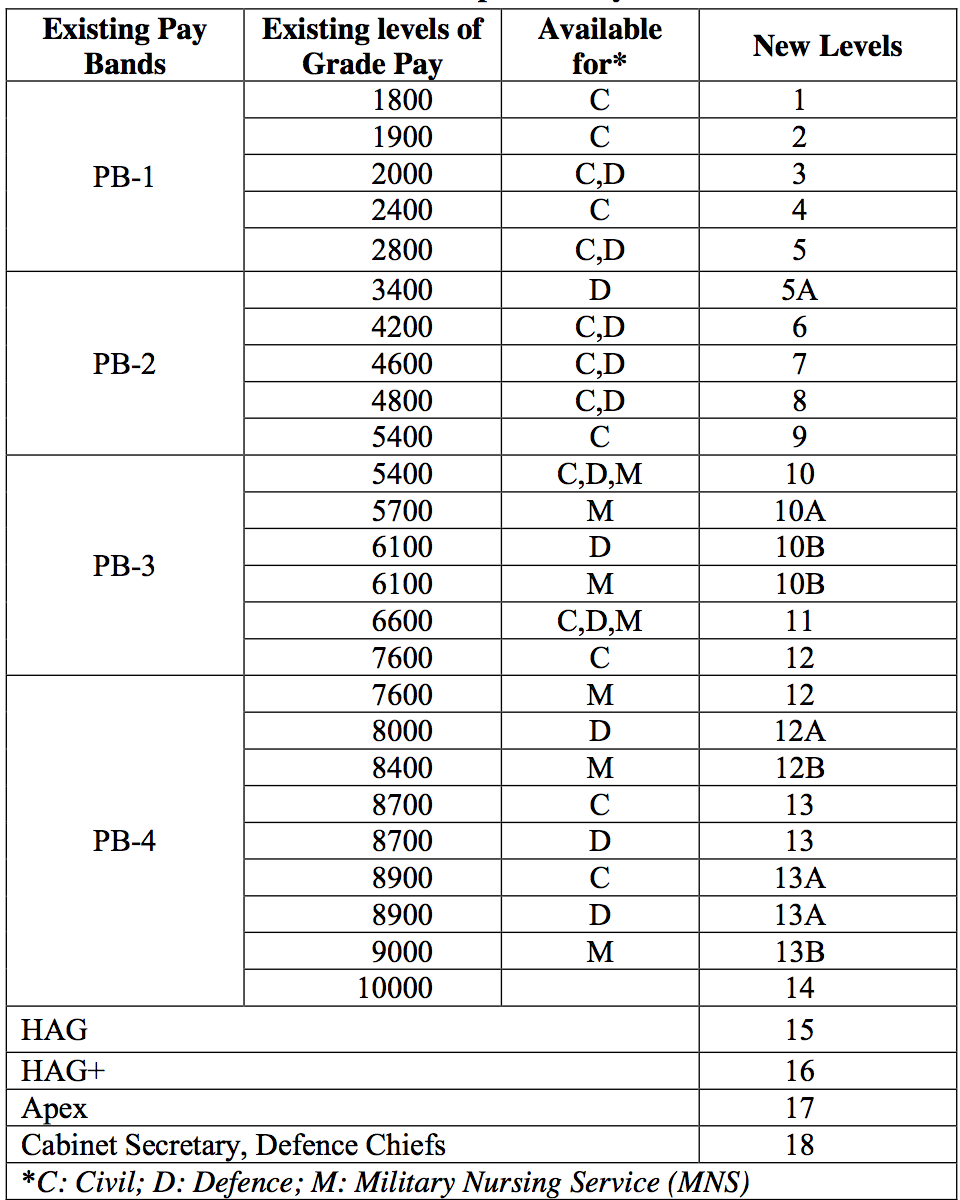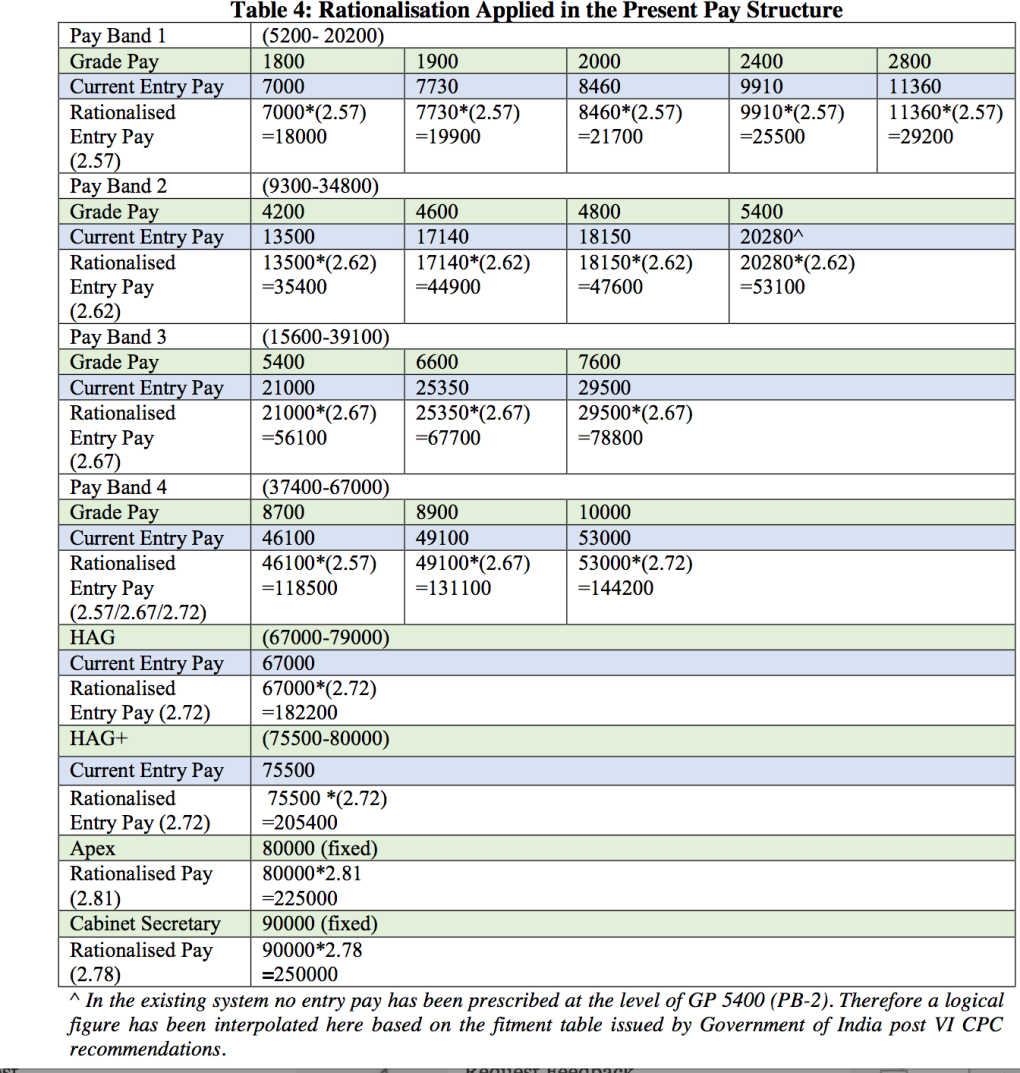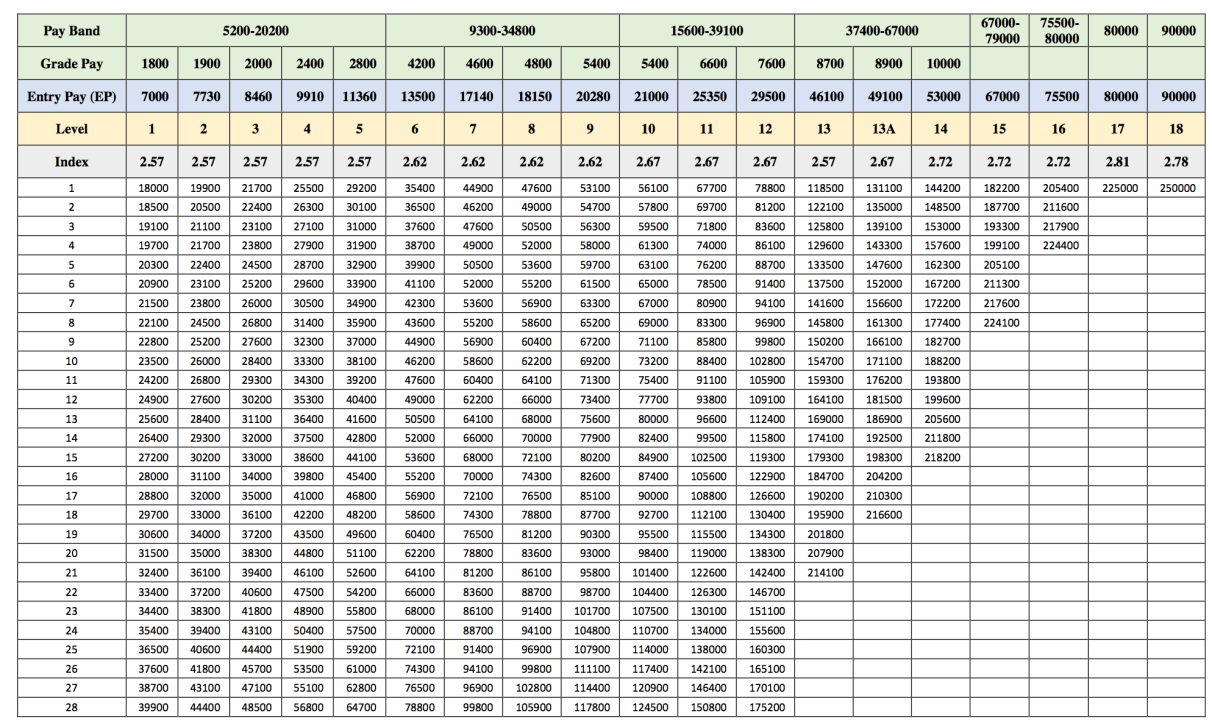The Seventh CPC like other Pay Commissions had been entrusted with the responsibility of evolving pay structures which were rational and simple.It was expected that the pay packages offered should be able to attract best talent in civil and defence services and also be capable of ensuring performance related efficiency while taking note of the existing socio political setup in the country.The pay structure should ensure value addition to services by talent of individual employees.
While discussing the pay structure for civilian employees the report explains the evolution of compression ratio to present level.Compression ratio is the ratio between the lowest pay and the highest salary drawn by Secretary to Govt. of India in the pay structure.At the time of first CPC the ratio was 1:36.4(min Salary of ₹ 55 against highest of ₹ 2000.) .This came down to 1:11.4 in sixth CPC (min Salary of ₹ 7000 against highest of ₹ 80000).
There were several innovations brought about by VI CPC which included running pay bands for both Civilians as well as Defence forces as well as the introduction of the concept of Grade Pay as a level differentiator besides calculation of the annual increment on percentage basis.Sixth CPC had also recommended abolition of Gr.D category posts by elevation of present incumbents to Gr.C by skill upgradation.It reduced 35 pay scales of Vth CPC to 23 (19 Pay bands +4 fixed pay levels).
However the Seventh CPC was confronted by stakeholders with several inconsistencies in Pay bands and Grade Pay structures and anomalies in Entry pay recommended by Sixth CPC at various level . This scenario had lead to demand for a fitment factor which may cover all cases in equitable fashion.
The recommendations of Seventh CPC are for abolishing the system of Pay Bands and Grade Pay and creation of new functional levels by merging the grade pay with the pay in the pay band. Commission said that it has ensured that all of the existing levels have been subsumed in the new structure; and no new level has been introduced nor has any existing level been dispensed with.The Seventh CPC has recommended a Pay matrix with distinct Pay Levels. The Level would henceforth be the status determiner as per table given below:

The Commission has pointed out that with this methodology of pay fixation “..any new entrant to a service would wish to be able to make a reasonable and informed assessment of how his/her career path would traverse and how the emoluments will progress alongside. The new pay structure has been devised in the form of a pay matrix to provide complete transparency regarding pay progression.”
In addition to the pay matrix the CPC has also applied concept ofrationalisation of entry pay to take care of uneven pattern of a jumps in the career hierarchy under existing pay scales in the Government of India. This system is based on the premise that with enhancement of levels from Pay Band 1 to 2, 2 to 3 and onwards, the role, responsibility and accountability increases at each step in the hierarchy.

The pay matrix as suggested by CPC is intended to replace existing system of Pay Bands and Grade Pay.The pay matrix comprises of two dimensions. ” It has a “horizontal range” in which each level corresponds to a ‘functional role in the hierarchy’ and has been assigned the numbers 1, 2, and 3 and so on till 18. The “vertical range” for each level denotes ‘pay progression’ within that level. These indicate the steps of annual financial progression of three percent within each level.”
The Commission has devised the pay matrix by calculating the sum of Basic pay and Grade Pay at various stages and multiplying the sames of by a multiplication factor of 2.57 . While devising the pay matrix the entry pay has been calculated by adopting different multiplication factors (shown as index in table below) for different pay bands depending on respective functional responsibilities.Pay Matrix is given below.


The following methodology has been suggested for fitment:
“The fitment of each employee in the new pay matrix is proposed to be done by multiplying his/her basic pay on the date of implementation by a factor of 2.57. The figure so arrived at is to be located in the new pay matrix, in the level that corresponds to the employee’s grade pay on the date of implementation, except in cases where the Commission has recommended a change in the existing grade pay. If the identical figure is not available in the given level, the next higher figure closest to it would be the new pay of the concerned employee. “
The CPC report has given some working examples for calculation.Having had a brief insight into Civilian Pay Scales we shall take up Army Pay Scales shortly.
*******************